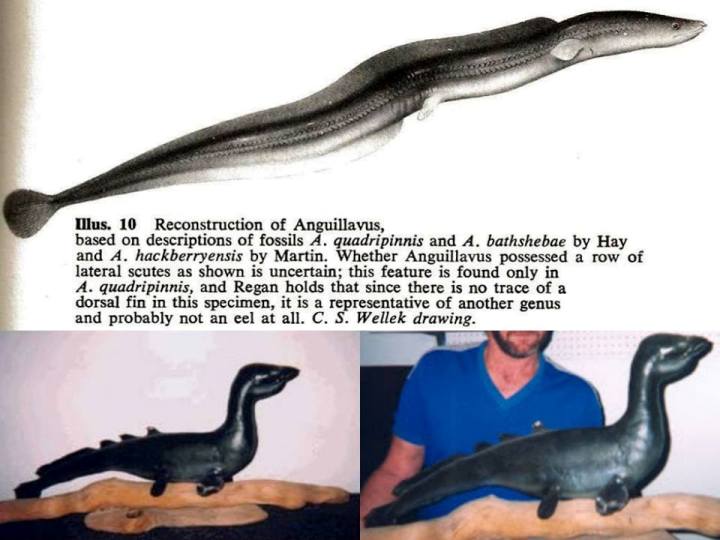
April 4, 2014

When the paleontology community has pooh-poohed the idea of relict plesiosaurs being responsible for the identity of various sea and lake “monsters” in different places around the world, some researchers have embraced the simpler theory that these hypothetical animals may be giant eels. The giant eel theory goes as far back as famed early American naturalist Constantine Rafinesque in 1817, who proposed it for the Lake Erie monster. The theory was further fueled by a 6 foot larval eel captured off the coast of South Africa in 1930. Based on ratios of the size of the larval stages of known eel species to the adults, it was theorized this 6 foot larvae might produce a 60 foot adult.
In 1970, ichthyologist D.G. Smith produced evidence to suggest that this 6 foot larvae was probably not a true eel but a Notocanthiform fish (related to the true eels). The Notocanths have large larvae that do not have the same disparity in size with the adults, so this was taken as a defeat to the sea serpent idea for the1930 larval fish. This has been disputed by some, however.
In the 1970’s, Roy Mackal developed the idea that certain individuals of the European eel (Anguilla anguilla) known to inhabit Loch
Ness might not go to sea to spawn and die like normal individuals and continue to live on in freshwater, growing larger and fatter until these animals literally turned into Loch Ness “monsters”.

Frankly, it’s hard to get behind the idea of an animal that normally gets 4 feet long maximum growing into something estimated to get at least 15-20 feet long. A more sensible idea is that the marine Conger eel (Conger conger) may somehow be able to adapt to freshwater conditions (though there is currently no evidence for this) and that occasion individuals come into Loch Ness via the River Ness, stay and grow considerably larger due to some unknown factor.
The Conger eel is known to get 10 feet long, so the idea of one getting perhaps a third larger than this under unusual circumstances might not be too far fetched.(In May 2001, two dead conger eels were left by some joker on the banks of Loch Ness. It was quickly determined that these were in fact marine eels by the contents of their stomach upon dissection).
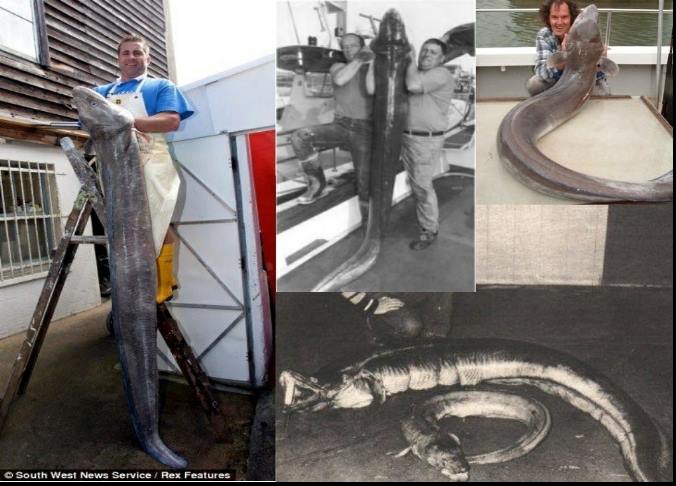
Paranormal investigator Bill McDonald is a great promoter of the eel theory for lake monsters and assisted Steve Alten with research for his wonderful book, THE LOCH. McDonald was also directly involved in investigating the controversial Nessie “tooth” discovered in 2004, who’s current whereabouts are unknown. Though some have dismissed it as a deer antler, McDonald has argued that it matches the teeth of some eel species.
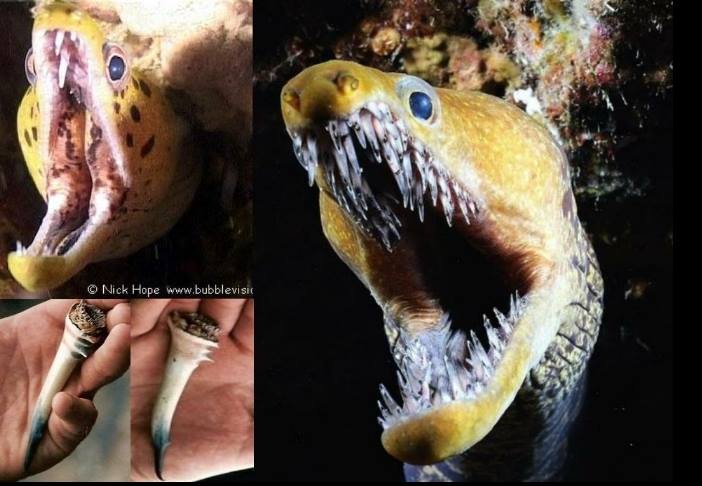
While the giant eel idea is appealing and replenishment of the “monster” population in Loch Ness could theoretically come from the sea, there is some evidence to suggest that the Loch Ness “monsters” have a set of rear appendages or pelvic fins, something unknown in any modern eel genus. The 1933 Hugh Gray photo seems to show the flanks of an animal with two sets of appendages.Some have suggested this photo is a dog with a stick in it’s mouth, but many find this suggestion ludicrous.
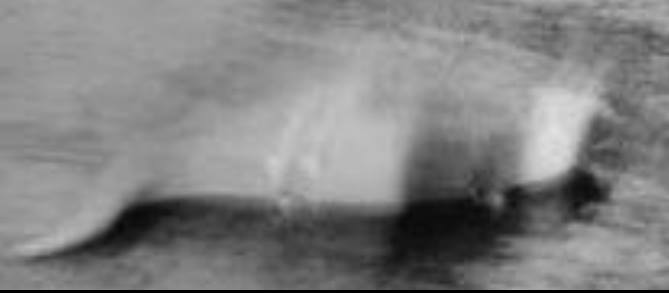
And there is the eyewitness sketch by Arthur Grant of the animal he allegedly saw on land at Loch Ness in Jan. 1934.

In an attempt to get around this potential problem, Roy Mackal (in his 1976 book, THE MONSTERS OF LOCH NESS) trotted out the prehistoric eel-like Cretaceous fish Anguillavus quadripinnis. This European animal had a set of pelvic fins but is believed to have been related to the true eels very closely.
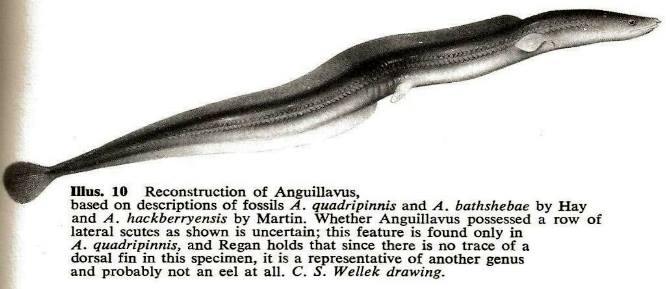
A controversial find from Lake Erie offers some parallels. The so-called “Erie Baby” is alleged by some to be a juvenile specimen of the Lake Erie “monster”.
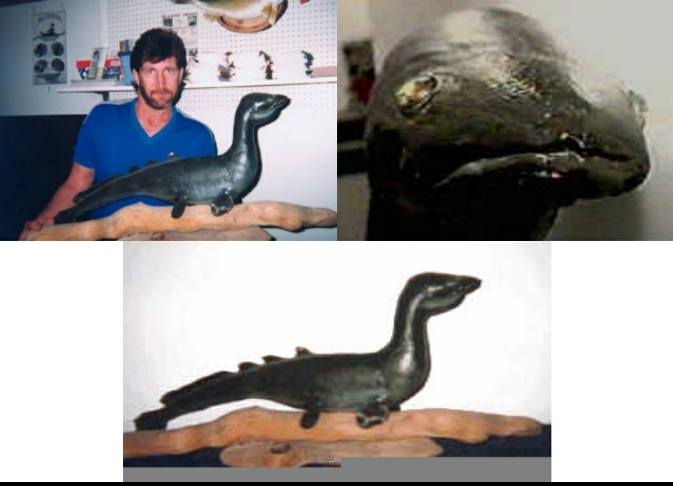
A somewhat skeptical, skewed version of the background story is here at this link. I have attempted to contact the taxidermist Pete Peterson to do my own interview but have so far been unsuccessful. DNA testing was attempted but the DNA was allegedly contaminated by taxidermy solvent. Glen Kuban is of the opinion that this is a Burbot (Lota lota) manipulated to look like a plesiosaur but has no direct proof of this. The current owner of the carcass, Dr. Carl Baugh of the Creation Evidence Museum, has gone from thinking it was a juvenile plesiosaur to some kind of anomalous eel-like fish, citing the disparity between the bone structure of plesiosaur flippers and what is seen in the appendages of the Erie Baby. Allegedly, another round of DNA tests are to be attempted.
What does this all mean, if anything? Hell, I don’t know. I’m just throwing it out there. It was an interesting read, don’t you think?
About Scott Mardis
Scott Mardis has been an active field investigator of the Lake Champlain “Monster” since 1992. He is a former sustaining member of the defunct International Society of Cryptozoology and a former volunteer worker in the Vertebrate Paleontology Dept. of the Philadelphia Academy of Natural Sciences (1990-1992). He co-authored a scientific abstract about the Lake Champlain hydrophone sounds for the Acoustical Society of America in 2010. He currently lives in Bradenton, Florida.
Filed under Bigfoot Report, Cryptozoologists, Cryptozoology, Evidence, Eyewitness Accounts, Folklore, Lake Monsters, Photos, Pop Culture, Sea Serpents